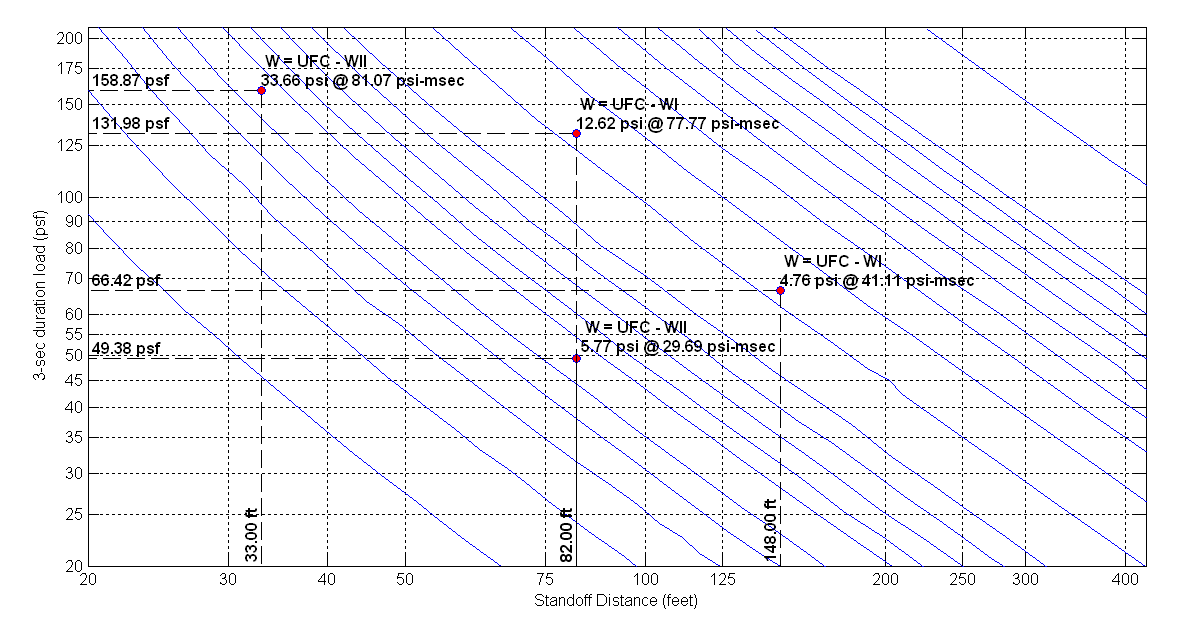
Very Low Level of Protection Windows vs Low Level of Protection Windows
While it seems that the Very Low Level of Protection (VLLOP) window requirements of the UFC 4-010-01 should result in a less restrictive design than the Low Level of Protection (LLOP) window requirements, this is not the case. The UFC 4-010-01 varies the level of protection by allowing shorter Conventional Construction Standoffs for the VLLOP instead of modifying the design procedure. This approach results in a more robust design for glazed systems for VLLOP than for LLOP (assuming all Conventional Construction standoffs are met).
As an example, let’s consider the case of two facilities which both meet or exceed Conventional Construction standoffs to both the controlled perimeter and to parking and roadways within the controlled perimeter. Facility A is required to meet a Low Level of Protection and Facility B is required to meet a Very Low Level of Protection.
UFC 4-010-01 Conventional Construction standoffs are summarized in the following table.
Based on these standoffs, the following figure and table summarizes the design load values considered in UFC 4-010-01 based on the ASTM F2248.
You can see from the table and the figure that the glazing design loads for VLLOP Facilities are higher than those for LLOP (159psf vs. 66.4psf). This results in a more robust design for mullions, connections and framing for a VLLOP Facility due to the reduced allowable standoff.
Regarding glass selection, prescriptive values of glass thickness and interlayer thickness are provided for Low Level of Protection Facilities, which should only be superseded by constructability considerations. However, glazing in Very Low Level of Protection Facilities must be designed in accordance with ASTM F2248/ ASTM E1300 and therefore may result in a thicker glass system.
Unfortunately, there is no advantage in VLLOP Facilities that provide larger standoff as the design is controlled by the 33 feet (Conventional Construction Standoff). For these cases, a more appropriate and economical approach would be to use dynamic analysis methods as allowed in UFC 4-010-01 section B-3.1.4.
When designing DoD facilities, these differences in window design requirements, using static or dynamic approach, should be kept in mind and the architect may want to keep glazed openings in VLLOP facilities to a minimum.



